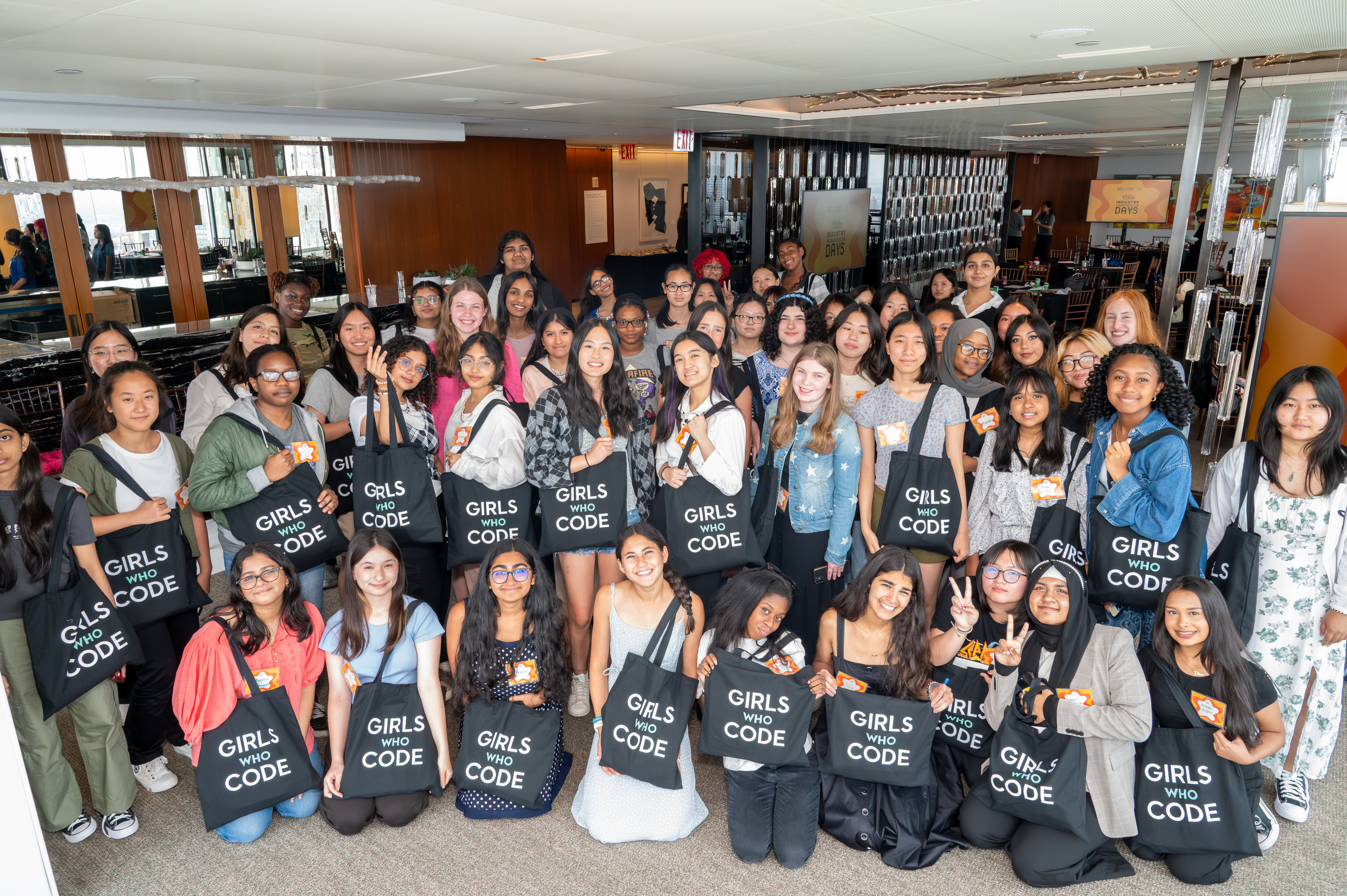Girls Who Code Works With State of Indiana on Comprehensive Legislation Aimed at Closing the Gender Gap in Tech
Governor Eric Holcomb signs Girls Who Code SB 295, which includes an amendment to bring more girls into computer science
Indiana bill marks the third comprehensive Girls Who Code bill passed through state legislatures this year, amid organization’s national efforts to achieve gender parity in K-12 computer science
INDIANAPOLIS, INDIANA (March 25, 2020) - Today, Governor Eric Holcomb signed SB 295, an education bill that includes an amendment from Girls Who Code to close the growing gender gap in K-12 computer science in Indiana. The legislation used recommendations from the Girls Who Code Policy Agenda to attract girls from K-12 to, and retain them in, computer science. The legislation was championed by Senator Linda Rogers.
“Tech jobs are some of the highest-paying, fastest-growing jobs in our economy and we can’t afford to leave our girls behind,” said Reshma Saujani, founder and CEO Reshma Saujani. “By passing this bill in Indiana, we are taking one more step toward ensuring that these girls have access to the jobs they need.”
The demand for computer professionals in Indiana is projected to rise by 8 percent by 2026, with computer programmers earning on average $80,000, almost twice the median wage of the state. And yet, women are only earning 20% of computer science degrees awarded in the state. According to Girls Who Code research, nearly 70% of growth in the computing pipeline can come from changing the path of the youngest girls.
“As a woman who studied STEM, I know just how important it is for us to bring more women and girls into the field,” said Senator Linda Rogers. “This bill will take the crucial first step in giving girls from all over Indiana the opportunities they deserve, so they can achieve their dreams and play an integral role in filling our tech positions.”
This amendment aims to increase the number of girls who participate in computer science by requiring the state to track and publicly report the number and percent of students participating in computer science courses, disaggregated by gender, race and ethnicity, special education status, English learner status, and eligibility for the free and reduced lunch program, among other categories. Tracking participation in computer science is the first step in effectively closing the gender gap and bringing true diversity and inclusion into the forefront of computer science classrooms. It will allow policymakers to better understand the overall impact of statewide policies, and allow them to create more targeted initiatives to make every computer science classroom look more like the schools and districts they are in.
“Schools should offer computer science classes early and we should see what classes students are interested in and figure out how to help get girls interested in coding early in life,” said Noemi Rosales, a fourth grade Girls Who Code Club member, who testified at the bill hearing.
Girls Who Code’s amendment was originally introduced as Senate Bill 318 and championed by Senator Linda Rogers. SB 318 was unanimously amended into SB 295.
Girls Who Code continues to work with state policymakers on legislative solutions to close the gender gap in K-12 computer science classrooms. The legislation in Indiana comes on the heels of similar legislation in Washington State and Colorado, and policy changes in Florida and Utah.
For full text of the Girls Who Code Policy Agenda
###
About Girls Who Code
Girls Who Code is an international non-profit organization working to close the gender gap in technology, and leading the movement to inspire, educate and equip young women with the computing skills needed to pursue 21st century opportunities.
Since launching in the United States in 2012, Girls Who Code has reached 185,000 girls through its programs (Clubs, Summer Immersion Program, College Loops), and 100 million people through campaigns, advocacy work, and 13-book New York Times best-selling series. To learn more, visit www.girlswhocode.com.
More Articles
- Girls Who Code Named One of The NonProfit Times’ Best Nonprofits To Work For for Third Year In A Row

- Girls Who Code Announces 2024 Summer Programs for High School Students

- Girls Who Code Welcomes Two New Board Members: Kavitha Prabhakar, National Managing Principal for Deloitte’s Core Business Operations & Gregory R. Simpson, former Chief Technology Officer at Synchrony Financial



